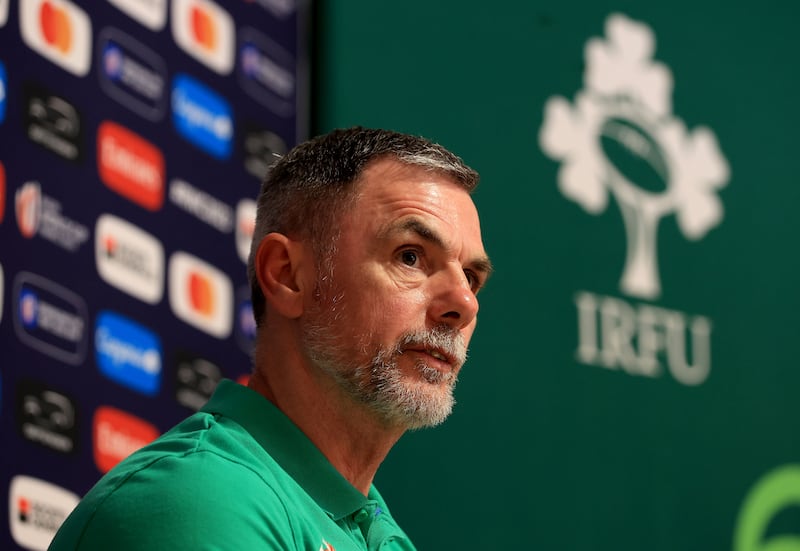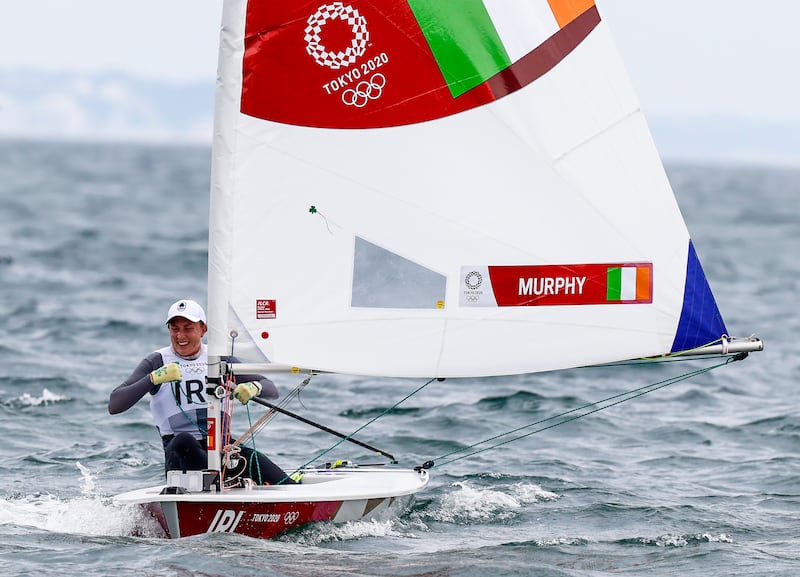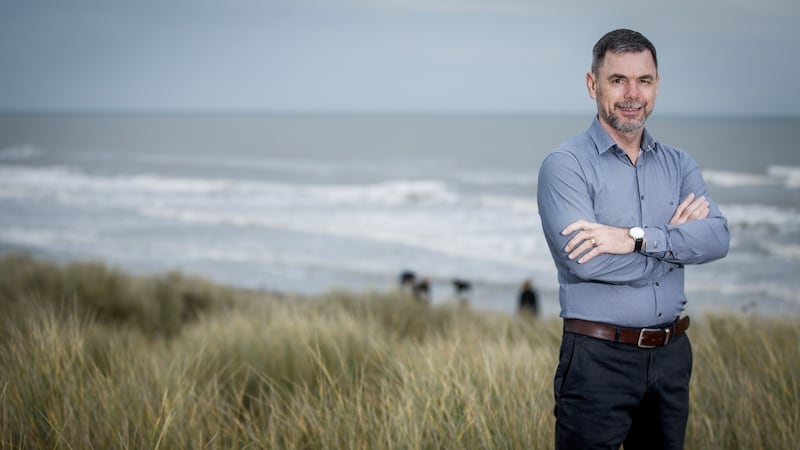At a coaching conference in Croke Park years ago Gary Keegan told a story about the harassed build-up to the Beijing Olympics in 2008. Keegan and the coaches were convinced they had a team of talented boxers, but they had bombed out at the World Championships in Chicago, and they were scrambling for solutions. They concluded that the boxers had become dependent on instruction, as if their thinking in the ring had been outsourced to a call centre.
So, for a month, the boxers sparred in silence. At first, the quality of the training collapsed, and some of the coaches worried that the cure would kill them. Keegan persisted. “They weren’t taking enough responsibility,” Keegan said. “We weren’t allowing them to take enough responsibility because we were doing everything for them. We over-mothered them.” He didn’t relent until he could see the boxers plugging into their own resources.
An “excuse mentality” was identified as another cause of their trouble. To make the athletes confront it Keegan replaced their Irish tracksuits with black garments, distinguished only by green piping down the side, and a shamrock. The boxing federation was up in arms that Keegan would take liberties with the Irish gear, but he refused to blink.
“‘We’re not standing up straight in these [Irish] tracksuits,’” he told the athletes. “‘We’re not walking with pride, competing with pride. What do we represent as an Irish team? As Irish people? What do we bring to this space? So, right now, the track suit is dark because we’re not sure of who we are. We want to fill this black with green – but we’re starting with a very small piece of green.’”
READ MORE
By the time the Olympics came around all of those issues had been resolved. Three medals in the ring was more than Ireland had won at any Olympics since Melbourne in 1956.
“I love a problem,” Keegan said in conversation, years later. “I love figuring a way around it. High-performance sport is about solving problems better than your competitor. So, you’ve got to love the problem.”

It is 20 years since Keegan wrote Irish boxing’s first high performance plan, navigating it for the next five years through a sniper’s alley of assassins in his own federation and in the Olympic Council of Ireland. The most talented wave of Irish amateur boxers in living memory depended on Keegan’s obstinate desire to see it through.
When Keegan stepped away from boxing after the Beijing Games he also drifted out of the public eye. He took on a leadership role at the Institute of Sport, a fledgling state body, and marked out its ground for eight or nine years. Then he moved on again to establish Uppercut, a corporate consultancy company that steered Keegan’s talents towards a different audience.
But all the while, behind various curtains, Keegan became one of the most influential people in Irish sport. He became a target for smart coaches searching for an edge: from Jim Gavin to Leo Cullen to Liam Sheedy to Andy Farrell, Keegan was courted and trusted and lauded. What he knew about their sports was immaterial: his talent was for reaching into people.
He was great at really, really clarifying what helped the individual perform: what are you going to do and how are you going to do it? I know that sounds wishy-washy ... but I’m telling you, it was big for us
— Former Dublin player Paddy Andrews on the influence of Gary Keegan
In the review conducted after the last Rugby World Cup, fault lines in the Irish team’s mentality were exposed. The IRFU advertised for a head of psychology and Keegan was appointed. He doesn’t have any formal, academic qualifications in that sphere, and he doesn’t describe himself as a sports psychologist. The incontrovertible proof of him was in his field work.
“He’s able to scan the landscape of a team,” says Sheedy, who worked with Keegan when Tipperary won the hurling All-Ireland in 2019, “see what needs work, and keep it really simple. You won’t be confused. You’ll have absolute clarity on what you’re going after.
“There was a documentary on the New Zealand tour [where Ireland won the series, 2-1] and without ever seeing Gary in the footage I knew his input. I knew by the way Andy [Farrell] was talking, the way the players were talking. Gary’s big on embracing and enjoying and relishing what might be coming in front of you. Nervous tension is never good around a camp. I look in at that Irish camp and they look like guys who are enjoying the journey. When you get to that place you remove all the pressure and you can be yourself. That’s all Gary wants.”
Unlike coaches who deal in strategy or strength and conditioning or match analysis, Keegan’s impact cannot by counted in cold, verifiable numbers. With performance coaches it is always a matter of testimony. In some respects it is abstract. The athletes must feel it.

For a couple of years before Annalise Murphy won silver at the Rio Olympics, Keegan was an angel on her shoulders. Her coach, Rory Fitzpatrick, had known Keegan for years and Murphy’s mind was open to any intervention.
In Olympic sailing, the athletes spend a lot of time away from home, competing against the same boats most of the time. On shore, they often become friends, which is a dynamic that can queer the pitch.
“It would be very, very lonely if you were doing it and you didn’t want to be friends with anyone,” Murphy says. “I was great friends with everyone – maybe too good friends with everyone. I never wanted to mess up any of my friends [on the water] or anything like that.”
In races, though, in order to win, you must sometimes attack an opponent and ruthlessly take them out. “You have to get used to hurting them,” said Fitzpatrick a couple of years ago. “Annalise didn’t particularly enjoy destroying someone.”
He brought this problem to Keegan and he suggested getting Murphy into the ring. “I wouldn’t have really liked confrontation,” says Murphy. “I still don’t know if I like confrontation, but over the winter I did those boxing sessions. It was more about, I don’t know, being able to stand up for yourself.”
I am quite hard on the people I work with ... I expect them to take responsibility and apply the advice to their practice
— Gary Keegan
One of her opponents in the ring was Fitzpatrick. In that controlled environment, Keegan wanted Murphy to hit someone she really liked. To make herself do it.
A year before the Games there was a test event in Rio. Fitzpatrick said later that he suspected it wouldn’t go well and he wanted Keegan to be there. “I was having a full meltdown that week,” says Murphy. “I was not sailing well. I was in a hole of, ‘What am I doing? I shouldn’t be going to the Olympics. This is awful.’ But Gary was very calm. He didn’t judge me on the fact I was performing badly. We were able to sit down afterwards and have a full reset. ‘Okay, what do we have to do for the next year to rebuild from this moment?’
“He makes you question if what you’re doing is the right thing, and how can you build yourself to be better. Not trying to be perfect but what can you do to be a little bit better. He expects very high standards. He commands a lot of respect. Being able to connect with athletes in the right way, so that they trust you, and want to improve because of whatever you’re telling them, that’s what Gary is very good at. He’s very good at getting athletes to trust him, and then getting them to believe in your work together.”
In a team environment, though, establishing those relationships is more challenging. In every group there will be a constituency of sceptics. When Gavin asked Keegan on board with the Dublin footballers in 2015 they were still carrying scars from an All-Ireland semi-final defeat by Donegal the previous summer. But there were also players in the group who had already won two All-Irelands. What did they need to know? Keegan needed to reach them too.

“He had a real connection with the players,” says Paddy Andrews, the former Dublin player. “That was the biggest thing. He cared about the players, he cared about the individuals. We were big on that. He was great at really, really clarifying what helped the individual perform: what are you going to do and how are you going to do it?
“That’s relatable – not just in sport. What helps you get the best out of yourself? I know that sounds wishy-washy, and it can be, but I’m telling you, it was big for us. We bought into it. The biggest thing for Gary was to simplify it. We were big on that. It was a massive string in our bow. If you look at our record, we didn’t lose tight games.”
For Dublin’s five-in-a-row Keegan was part of Gavin’s inner-cabinet. It is the only kind of working relationship that Keegan will countenance: it must be founded on professional intimacy. The Dublin players knew that Gavin placed massive trust in Keegan. Every year, at the team banquet on All-Ireland final night, the person sitting next to Gavin at his table was Keegan.
In Keegan’s mind, working with the coaches was just as important as making an impact on the players. When Cullen persuaded him to work with Leinster during their push for the Heineken Cup in 2017, Keegan’s primary focus was Cullen. Working with the players came later.
[ Tadhg Furlong: ‘Scotland are flying. It’s going to be a huge challenge for us’Opens in new window ]
Sheedy derived comfort and energy from Keegan too. On Tipperary’s run to the All-Ireland in 2019 they lost a Munster final to Limerick by 12 points. “The first thing was, Gary was all over me,” says Sheedy. “The first person that needs to be rewired, or re-programmed, is the leader. I matched Gary and Gary matched me in terms of setbacks don’t really define us. But they’re lonely moments when it simply blows up in front you.
“The minute I touched down at home that evening my first call was to Gary. That call probably took an hour. The healing process in myself and Gary’s head had already started.”
Keegan sweats these relationships. He doesn’t put the advice in the post and hope you open the letter. “I am quite hard on the people I work with,” he said a couple of years ago. “I won’t go around in circles with people. I expect them to take responsibility and apply the advice to their practice.
“My performance is important to me so I’m not going to allow someone else drag my performance down. I know the kind of people I can help. I’m very ambitious to make an impact. If I’m not making a difference I won’t hang around.”
In Keegan’s last year with Dublin they were chasing five-in-a-row, a new frontier in Gaelic games. With Keegan, they were never going to just sneak up on it and hope to take it by surprise. “You can’t be tippy-toeing around stuff,” he said. “You’ve got to drive the elephant into the room. So we don’t walk on eggshells, we crash in and find out, ‘What’s this about?’”
With the Irish rugby team, their record in knock-out games at the World Cup is the elephant in the room. They won’t have waited until now to thrash it out. They will have found their right mind.


















